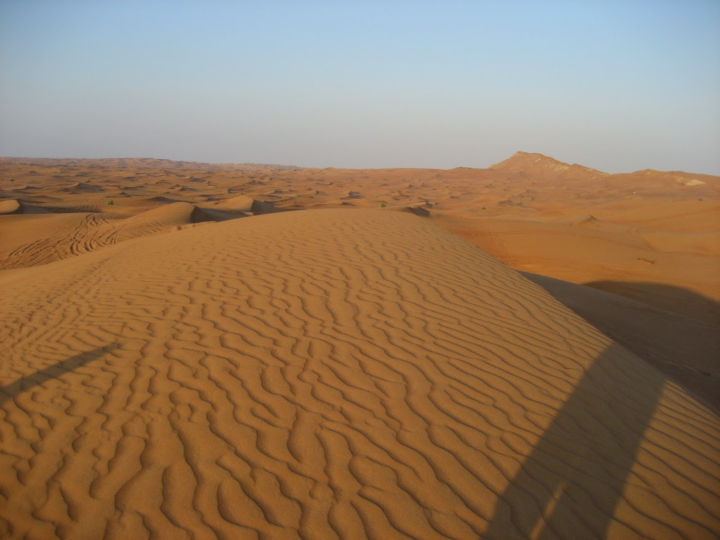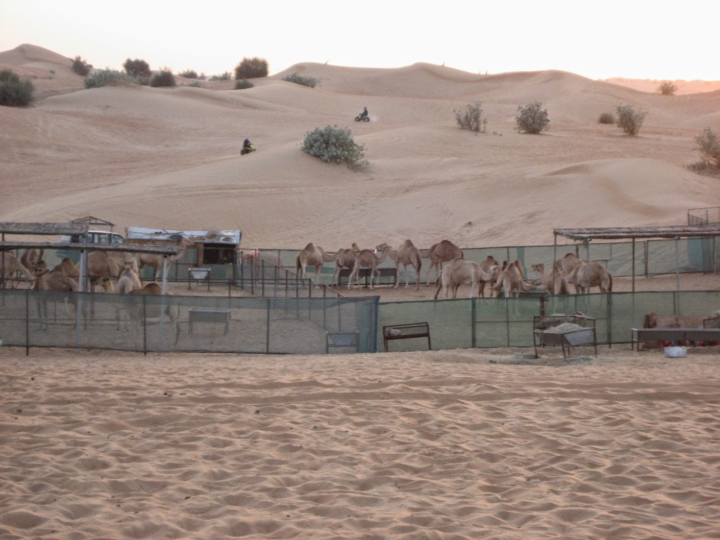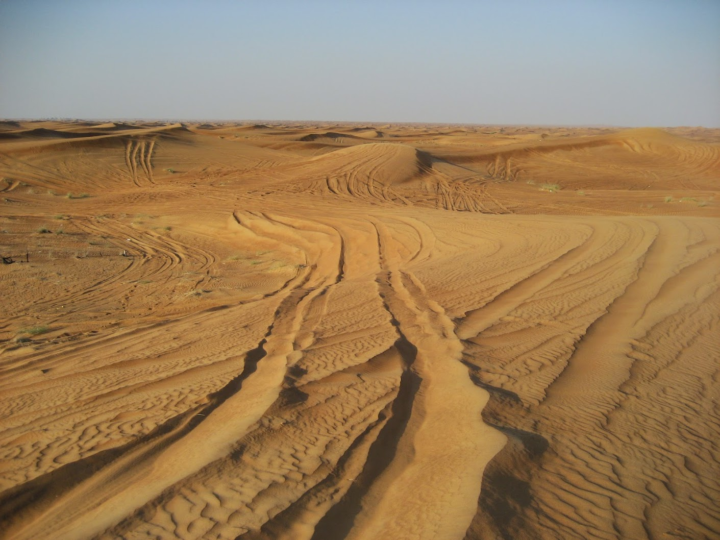For the foods we chow down on every day, labels and nutrient values do not tell us enough about the history of their evolution or the processes used in their production. When we eat, we don’t always know what is the chemistry, botany or geographical source of what we ingest, or the evolutionary process we are part of.
Of course, the sheer bulk of information about food and nutrition that is discussed on the net is practically obscene, and most of it is mainstream in nature. But is there enough depth to make us understand how, as humans, we have evolved in interaction with food? Do we really grasp, for instance, that after humans discovered how to light a fire, over a few centuries our jaws got smaller and our head size diminished because we were no longer chewing raw meat? There are many other similar evolutionary processes.
This was meant to be a short and scrappy rant about farming, famines, monoculture, desertification, and GMO foods. Instead, I have chosen to put together some bullet points on those topics and dish out short, bite-sized portions of what’s going on in this colossal area of growing food for sustenance and commodification, and the politics of human survival. Sort of a mixtape, if you will.
1. Famines and facts
This is a good place to start. As the relatively reputable organization Oxfam puts it:
Famine looks like a lack of food, and most people think it is brought on by a drought, a war, or an outbreak of disease. And some still believe in debunked 19th-century theories about “overpopulation” causing famine. But famines are usually caused by multiple factors, compounded by poor (or even intentionally bad) policy decisions that make people vulnerable. When no one addresses this vulnerability, it leads to famine.
This leads us on to one of the sorest points, for me, over the past three decades. The British Empire successfully looted (an Indian word, no less) India of trillions of pounds sterling after a 200-year rule and rampage. Irrespective of the fact that there are a lot of grumpy Englishmen and their servile colonial “native” harrumphers who still mutter supportively of Empire, the Indian Civil Service, and the railways, Victorian cities and hill resorts they designed and left behind, there is this business of what happened in 1943 in Bengal.
Not too many people seem to be aware of it. One and a half million Bengalis died that year, as per official statistics. According to several other reports, the number of deaths was closer to 4.5 million! Physicist Madhusree Mukerjee, who is an editor at Physics Today and Scientific American, wrote an extraordinarily well documented book (Churchill’s Secret War: The British Empire and the Ravaging of India during World War II) detailing how Winston Churchill and his underlings had food diverted from the warehouses of Bengal and elsewhere to the European war theatre, to ensure that the Empire’s soldiers were well fed during the War. Meanwhile, Bengalis died like flies in the streets of Calcutta (now renamed Kolkata). Churchill referred to Indians as a “beastly people with beastly habits” and blamed the famine on the “fact” that they were “breeding like rabbits.”
While famines also occurred in India before the British arrived in the mid 18th century, the British-era famines were systematic, well organized and needless to say, better documented!
2. Wars and the play of words
An interesting news plant in mainstream media suggests that urban migration, weather patterns and changing food habits are some of the principal conditions for food shortages. It does coyly mention that unstable political conditions are also one of the reasons.
As recently as the 8th of November 2021, the World Food Programme warned that 45 million people were on the brink of famine across 43 countries. Afghanistan had become the world’s largest humanitarian crisis, with the country’s needs surpassing those of other worst-hit countries – Ethiopia, South Sudan, Syria and even Yemen.
Is that not curious? In those hard-hit African countries and elsewhere, some of the worst famines have occurred as a direct result of war instigated and supported by global conflicts and struggles to control ports and seaways… not because of a change in food habits, surely! And now the famine in Afghanistan – surely it can’t be attributed to the Pashtuns wanting more pizzas delivered to their doorstep, rather than naans!
3. Cash crops versus crops for sustainability
What is a cash crop? It is a crop that’s sown to earn profit. It is grown as a commodity, sometimes for export. It can be used as feedstock for other economies. Like cotton for the textile industry. Or it may serve other purposes, as opium did in China, to ensure that the Chinese were left in a dazed state while the looting of their country continued. It is typically purchased by parties or agents who do not grow the food. A far cry from subsistence or sustainable crops that peasants or farmers grow to sustain their family and their livestock and to perhaps have a little left over to sell in the market, if they possess enough farmland.
Cotton, tobacco, jute, indigo, opium and cane sugar are prime historical examples of the forced conversion of a subsistence and sustainable economy into a dependent colonized economy to serve the industrialization needs of a “centre” economy.
There are interesting articles available on cash crops.
4. Monoculture, multi-crop farming, and deserts
My original rant started here, with the ravages of monoculture and the corporate assault on seed diversity and collective rights to safeguard seeds. To put it simply: multi-crop farming vs monoculture. And how that ties in with the growing increase of deserts in Africa and certain parts of the world, and the somewhat discombobulated efforts in China to thwart the alarming growth of the Gobi Desert.
Soil turns to sand when it is robbed of minerals. This happens with monoculture. Which is the practice of pandering to high-productivity single seeds bought every year from large corporations. Monoculture deprives the soil of micro-organisms, minerals, fungus, unicellular life, etc.
Soil is sustained by what I call “multiculture” – multi-crop farming and seed diversity. But an easy revenue stream is heedless of the health of the soil, and is far more attractive. Agricultural land gets converted to sandy soil over a period of time and then to desert, or it sometimes changes the direction of rivers and streams. Growing food in a regimented fashion – big collectives, big farms, combines – is the result of both predatory capitalism and disoriented, heavy-handed socialist planning programs.
This is an ideal situation where companies like Monsanto (which no longer exists under that name, as it comes under Bayer – just as Union Carbide has been renamed Dow Chemical) step in with high-yield seeds, cancerous fertilizers and pesticides… and even arrange loans for farmers.
So, we have sandy soils, deforestation and drought, which screw up humidity levels, kill trees and affect carbon absorption. This results in jet streams 10 km above sea level, which in turn lead to climate change and a rise in temperature in the oceans, causing tempests, tsunamis, environmental disasters, erosion, floods… and eventually farmer suicides, after farmers are repeatedly unable to pay the interest on their loans, due to failed harvests.
Meanwhile cities are sinking. The Island nation of Tuvalu expressed regret that India and China watered down the COP26 resolution on phasing out coal consumption. It is interesting that China and India, who typically vote on opposite sides on international issues nowadays, shook hands, to the detriment of the planet. Boy! Have we defenestrated our entire heritage and legacy as a biological species! Just so some can grow food by any means necessary and sell it as well, by any means necessary. Despite what sounded like a sane human instinct several thousand years ago – to grow food, eat healthfully and work hard enough to ensure happiness – we now seem to have turned ourselves into myopic morons.
In an informative and yet blasé report from the Canadian province of Alberta, we see where all this is coming from and where it’s heading. Please see the conclusion on page 15 of the report. You will find the word PRICE emphasized and re-emphasized in almost every paragraph in what is supposed to be a report on Food and Agriculture Best Practices. Even though the conclusion acknowledges that farmers should be saving seed for the next year, it comes with a caveat: that there are no guarantees as to the productivity or the quality of the saved seed.
Table 1.3 shows that farmers saving seed is cost effective almost all the time. However, there (sic) are increasing their risks of reduced yield due to decreased seed genetic purity and tolerance to drought and disease to name a few. From the table, farmers can generally price in about a $3.75/bushel price premium for access to new genetics, increased tolerances and convenience of purchasing certified seed.
And I have not even started talking about water! Water – irrigation – is fundamental to grow crops, grow forests and sequester carbon. But water is effectively running out on land, and rising in the oceans, as land washes away and ice caps melt away.
So, we are in what could be best described as a deep shithole. Maybe, JUST MAYBE, soil, plants and animals should have ruled us?
Let’s talk about Nestle here! From coffee and chocolates to foods and beverages, this is one of the world’s largest food companies. The former CEO of Nestle has belligerently asserted that “water is not a human right.” This company has made a big dent in sustainable farming by buying up land to convert to orchards and farms for growing and canning fruits and nuts – which incidentally suck up enormous amounts of water. The increase in obesity in Brazil amongst the poor and working class is clearly described here… and the role played by Nestle’s processed food is far from innocent. Nefarious is it not?
5. Which kind of brings us to food chain and biodiversity and the opinions of the very famous Dr. Vandana Shiva, as she addresses the issues of manipulated yield statistics and the need for ecological agriculture.
6. Finally, peasants and farmers
In ending this short opinion piece, I would also like to draw the attention of Serai readers to an excellent essay by Rahul Banerjee and Subhadra Khaperde on the history of food, in this very issue. I asked Rahul, who is an engineer, farmer, activist and writer, for his opinion on the farmers’ movement in India that is currently very much in force. He gives kindred arguments here to the ones put forward in my rant.
All I can say in closing is, grow what you can, eat healthy, and run hard!
All photos were taken near Dubai by Rana Bose



